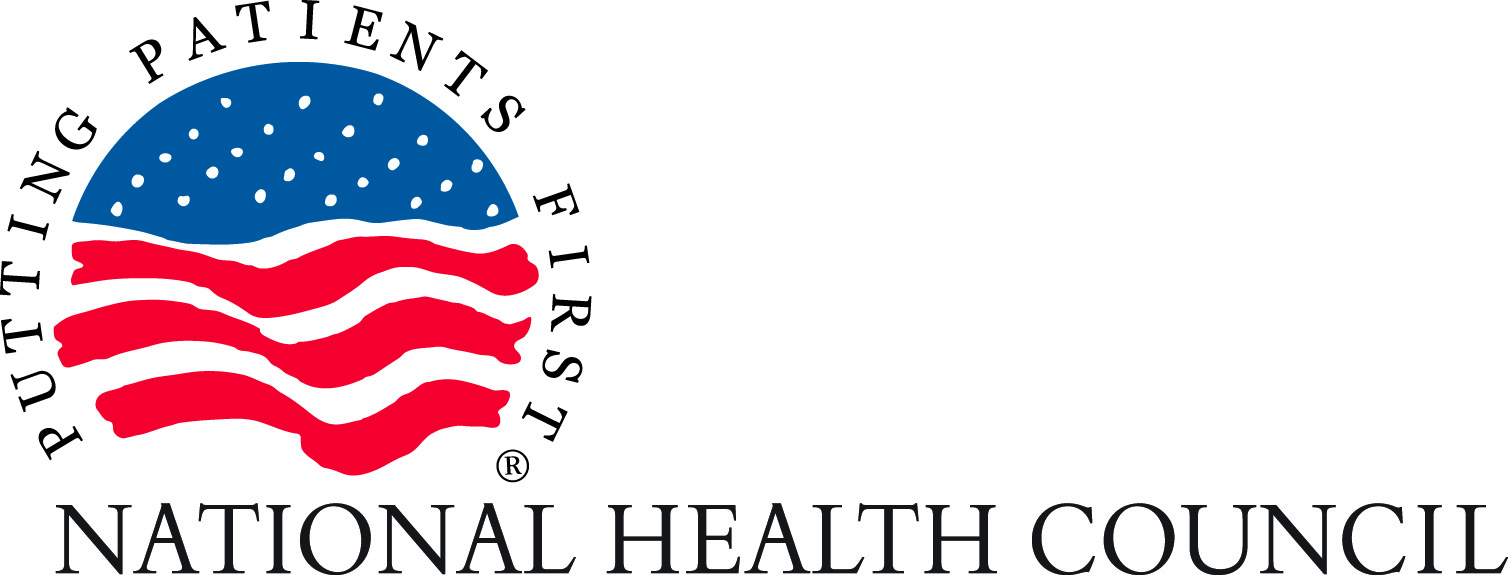

2020 Science of Patient Engagement Symposium
- Event Date: Sep. 29 - 30, 2020
- Event Location:
- Agenda (download)
Including More Voices: Improving Diversity and Representativeness
The National Health Council’s annual Science of Patient Engagement Symposium, where research leaders can share – with a broad scientific audience – their experiences, accomplishments, best practices, and resulting impacts on the science of patient engagement, happened virtually in 2020. Watch highlights and read the meeting summary below.
Symposium Summary
The 2020 National Health Council Science of Patient Engagement Symposium, Including More Voices: Improving Diversity and Representativeness, brought more than 170 scientists and patient advocates together virtually to exchange ideas and experiences on the role of patient engagement in improving diversity and representativeness and vice versa.
Throughout the Symposium, key themes emerged. Speakers presented a humanitarian argument, that improving diversity in research is the right thing. They also addressed it as the smart thing to do to ensure health care is designed for all Americans. Listening and taking action to address diversity and representativeness were described as essential. Other key takeaways from the conference included:
- To produce high-value treatments for all patients, it is necessary to engage with patients and diverse communities from the very beginning, including the pre-design phase.
- Building a long-lasting and transparent relationship is key when working with traditionally underrepresented and economically excluded communities.
- Distrust of medical institutions and researchers is widespread in populations that have historically been taken advantage of. Collaborating with patient participants is a first step in reestablishing trust.
- The financial cost of not engaging with diverse and representative communities is immense and leads to billions of wasted dollars every year.
- Companies and individuals should commit to examining their own, internal biases in a systematic fashion to make themselves more aware of the potential struggles their communities and colleagues face. Do not just be “not racist”, but actively be anti-racist.
- We should strive to understand people’s lived experiences, and meet patients and communities where they are.
Following is a summary of each session. Be sure to check out video highlights here.
Acknowledgements
We would like to acknowledge our Symposium Co-Chairs and Planning Committee:
- Co-Chair: Eduardo Sanchez, MD, MPH, FAAFP, Chief Medical Officer for Prevention and Chief of the Center for Health Metrics and Evaluation for the American Heart Association
- Co-Chair: Lode Dewulf, MD, DPM, FFPM, Chief Patient Affairs Officer at Servier
- Patrick Campbell, PharmD, PhD, Director, Measurement Outcomes Research, Pharmacy Quality Alliance
- Alexis Chavez, MD, Patient Advocate, Medical Director, The Trevor Project
- Josephine Grima, PhD, Chief Science Officer, The Marfan Foundation
- Brenda Huneycutt, PhD, JD, MPH, Director, Regulatory Innovation, FasterCures, A Center of the Milken Institute
- Jessica Kennedy, Chief of Staff and VP of Finance, Mental Health America
- Barry Liden, JD, Vice President of Patient Engagement, Edwards Lifesciences
- Thomas R. Miller, PhD, MBA, Director of Analytics and Research Services, American Society of Anesthesiologists
We would also like to acknowledge and thank our sponsors:
Premier







Leading



Supporting



Day 1
Sessions
The Patient Perspective: DeJuan Patterson, MPA, Senior Consultant, The Bridge Advisory Group; Consultant, PATIENTS Program, University of Maryland, Baltimore
DeJuan Patterson opened the Symposium by sharing his moving personal story with attendees about how he became a patient advocate and community leader. His experience began after being a victim of gun violence as a teenager and encountering discrimination by police after he was seriously injured. A senior in high school at the time, DeJuan had to be his own health care champion. He walked attendees through his journey from patient to advocate to advisor. He encouraged attendees to meet people where they are through active listening and to see people as partners, not simply research subjects.
Opening Remarks: Ken Frazier, Chairman, CEO of Merck & Co., Inc.
Ken Frazier encouraged inclusive patient representation in pharmaceutical research to better understand different points of view, accelerate research, and alleviate burdens on patients. He discussed how COVID-19 has disproportionately impacted communities of color and how as a nation we must move beyond platitudes to action to address disparities. He concluded his remarks with a challenge for attendees, asking: How do we build upon the progress the health care industry has made and what will it take to make a bigger impact in the next decade?
Watch Ken Frazier’s opening remarks.
Reactor Panel:
- LaVarne A. Burton, President & Chief Executive Officer, American Kidney Fund
- Kenneth Mendez, President & Chief Executive Officer, Asthma and Allergy Foundation of America
LaVarne Burton and Kenneth Mendez explored how we put our country back on track and address the critical issues introduced by Mr. Frazier and Mr. Patterson, including access to and quality of care. They advocated for greater efforts for patients to effectively communicate with both industry and their providers to help address the considerable misunderstandings that can occur in clinical trials and with their personal health care. Mr. Mendez stated that this is a heavy lift and while we’ve made advancement in therapies, the outcomes, for some in the black, Hispanic, and indigenous communities have not improved since 2005. Mr. Mendez noted these disparities come at a staggering financial cost – $135B per year – to the health care system.
Emerging Work on Diversity & Clinical Trials: A Spotlight on the MRCT
Moderator: Patrick Campbell, PharmD, PhD, Director of Measurement Outcomes Research, Pharmacy Quality Alliance
- Barbara E. Bierer, MD, Faculty Director, Multi-Regional Clinical Trials Center of Brigham and Women’s Hospital, Professor of Medicine, Harvard Medical School and Brigham and Women’s Hospital, Director, Regulatory Foundations, Ethics & Law Program of Harvard Clinical and Translational Science Center, Director of Regulatory Policy, SMART IRB
- Sarah A. White, MPH, Executive Director, Multi-Regional Clinical Trials Center of Brigham and Women’s Hospital and Harvard
The Multi-Regional Clinical Trials Center of Brigham and Women’s Hospital (MRCT Center) formed its Clinical Diversity workgroup in 2017. Recently, the organization released its Diversity, Inclusion, and Equity in Clinical Trials Guidance and Toolkit, which encourage public and community engagement to increase diversity in clinical trials. Dr. Bierer and Ms. White assert that clinical trials should address questions important to the patient community and every stakeholder has responsibility – whether it’s the sponsors/institutions, data collectors/analyzers, investigators or patients/advocates – to be accountable for increasing diversity in their clinical trials.
Dr. Bierer and Ms. White challenged superficial, check-the-box engagement and explained that diversity should be included throughout the clinical process – drug discovery, pre-clinical studies, clinical trials, post-marketing studies, and continuing to drug safety. Organizations need to commit human and financial resources to make this possible. Dr. Bierer and Ms. White concluded that if we don’t listen to patients, we are not going to make change and develop treatments that are effective for all.
What Are Patient Organizations Doing to Enhance Inclusion Research and Outreach?
Moderator: Josephine Grima, PhD, Chief Science Officer, The Marfan Foundation
- Adrian Palau-Tejeda, Diversity and Inclusion Fellow, EveryLife Foundation for Rare Diseases
- Jeanne Regnante, Chief Health Equity Officer, LUNGevity Foundation
Mr. Palau-Tejeda opened the session with data that clearly illustrates the lack of diversity and representativeness in research today: while Black Americans make up 13 percent of US population, they make up just three percent of clinical trial participants. Mr. Palau-Tejeda and Ms. Regnante identified actions toward enhancing diversity and representation within patient organizations, including:
- Hosting sessions at events dedicated to discussing the needs of diverse and underserved communities
- Creating scholarship and stipend programs to ensure conferences are accessible to individuals of all socioeconomic backgrounds
- Being deliberate with outreach, including: reaching out to organizations providing services to diverse populations across the United States; and setting and tracking goals for diverse community outreach
- Creating health-literate materials to ensure they are designed with accessibility and inclusivity in mind.
Mr. Palau-Tejeda stated: “When engaging with underserved communities we have to understand the barriers and challenges that exist systemically and in provider spaces before really committing to talking, speaking, and empowering communities. You really can’t engage a community if you don’t understand the struggles they are going through.”
FDA Oncology Center of Excellence Initiatives to Advance Patient Engagement
Moderator: Brenda Huneycutt, PhD, JD, MPH, Director, Regulatory Innovation, FasterCures – A Center of the Milken Institute
- Lola Fashoyin-Aje, MD, MPH, Deputy Director Division of Oncology 3, Office of Oncologic Diseases (OOD) & Associate Director for Science and Policy to Address Disparities, Oncology Center of Excellence (OCE)
- Jessica Boehmer, MBA, Regulatory Scientist, OOD, Products, US Food and Drug Administration
- Vishal Bhatnagar, MD, Associate Director, Patient Outcomes, Oncology Center of Excellence, US Food and Drug Administration
The FDA’s Oncology Center of Excellence launched Project Equity to increase racial and ethnic minority participation in clinical trials. Addressing underrepresentation could improve access to potentially promising drugs and generate evidence of clinically important differences in safety and/or efficacy by race or ethnicity. The Center initiatives include programs on community outreach, which seek to build relationships with survivors, patients, advocates, families and others in underserved or underrepresented urban and rural communities who live with heightened cancer risk. Some of the goals of these programs include increasing enrollment in oncology clinical trials, engaging in internal/external research and policy efforts, developing policy/guidance on best practices, and integrating with all FDA Oncology Center of Excellence (OCE) programmatic areas. For information on how to engage with the FDA go to:
- Patients Ask FDA portal at fda.gov/PatientsAskFDA
- FDA Patient Representative Program at https://www.fda.gov/patients/learn-about-fda-patient-engagement/about-fda-patient-representative-program
- Get in touch with the FDA Patient Affairs staff at https://www.fda.gov/about-fda/office-clinical-policy-and-programs/patient-affairs-staff
Day 2
Coffee with the Experts
To kick off day two, the NHC Symposium included a series of Roundtable discussions on wide-ranging topics, including:
Racial and Ethnic Asthma Disparities in America: A Roadmap For Change
Navigating Current Challenges and Using Clinical Trials to Improve Diversity, Inclusion, and Health Equity Outcomes
The LITE Study: Evaluating the Effectiveness and Safety of Home versus Office Phototherapy for the Treatment of Psoriasis in All Skin Types:
Health Literacy as a Tool to Improve Patient Engagement
Improving Public Health through Partnerships: Gilead’s Approach in Resource-Limited Countries
Real-World Experiences: COVID-19 and Social Injustice – How to Use the Principles of Patient Engagement to Respond and Inform Change
Brainstorming on Overcoming Barriers to Diversity & Inclusion in Clinical Trials
Enhancing the Communication Pathway: Sharing Patient Experience Data with Regulators
Sessions
An Update from PCORI
Moderator: Thomas Miller, PhD, MBA, Director, Analytics and Research Services, American Society of Anesthesiologists
- Lisa Stewart, MA, Senior Engagement Officer, Patient-Centered Outcomes Research Institute (PCORI).
- REACTOR: Debra Joy Perez, PhD, Senior Philanthropic Advisor and Independent Executive Consultant
Ms. Stewart reported that it has been a remarkable year for PCORI. The organization was reauthorized in December and Dr. Nakela Cook was named its new Executive Director in January. At their recent Annual Meeting, PCORI had several sessions related to eliminating disparities. PCORI has also executed several initiatives related to COVID-19, including the Health Care Worker Exposure Registry, or HERO, to measure the impact of the pandemic on health care workers. PCORI believes that systematic, meaningful engagement makes research better and reflects the needs and values of patients, caregivers, clinicians, and other stakeholders. Coming later this year, PCORI will issue best practices that support inclusion and health equity in patient engagement research. PCORI recommends partnering with community leaders – identified by and within the community – not by position or title. And to reduce bias in recruitment, researchers need to debunk myths and interrogate their own assumptions. Engagement works, but it takes time, attention, and respect.
Can Artificial Intelligence (AI) Findings Be Flawed Due to Bias?
Moderator: Barry Liden, JD, Vice President, Patient Engagement, Edwards Lifesciences
- Erich Huang, MD, PhD, Director, Duke Forge, Assistant Dean for Biomedical Informatics, Duke University School of Medicine
To answer the question “Can AI Findings Be Flawed Due to Bias?” Dr. Huang said that the bottom line is, “ABSOLUTELY.” Artificial intelligence (AI) findings can be flawed due to bias. Machine learning is far from objective because AI learns human biases. Bias comes from three main sources: preexisting bias, which has roots in social institutions, practices, and attitudes; technical bias, which is found in several aspects of the design process, including limitations of computer tools; and emergent bias, which includes social knowledge, population, or cultural values that already exist in society and emerge after the project is completed. It’s important to remember that humans have ethics and morals, while AI does not. Potential fixes to AI bias include more representative data collection and new policies, such as the General Data Protection Regulation in Europe and vigilance to develop good machine-learning practices and community standards. It is important to remember that AI is an extension of, not a replacement for, our human capabilities. As with most things, transparency is essential.
A Blueprint for Effective Health Outreach to Vulnerable Communities: Meeting Patients Where They Are
Moderator: Jessica Kennedy, Chief of Staff, Mental Health America
- Melissa Clarke, MD, Physician Consultant for Healthcare Transformation at 3M Health Information Systems
Health disparities account for $93 billion in excess health care costs and another $42 billion in lost productivity. Examples of health care disparities impacting vulnerable populations include social barriers, lack of access to care, disempowerment, and mistrust of the medical community. Working with a trusted intermediary with deep reach into the community is one way to begin to address health disparities and increase community health outreach. Social media is another important way to reach people and correct disinformation.
Dr. Clark suggested patient advocacy groups, who often have a lot of contact with caregivers and others in the community, can begin to address health outreach issues in underserved populations in the following ways:
- Educate their staff on cultural competency by examining their own biases;
- Hire a facilitator to do a deep dive into implicit biases in your own organization; and
- Consider the question: What are the things that keep you from relating with others because our society promotes and emphasizes differences?
Current Initiatives at the National Institute on Minority Health & Health Disparities
Moderator: Elisabeth M. Oehrlein, PhD, MS, Senior Director, Research and Programs, National Health Council
- Nathaniel Stinson, Jr., PhD, MD, MPH, Director, Community Health and Population Science, National Institute on Minority Health and Health Disparities, National Institutes of Health
The National Institutes of Health’s (NIH) inclusion policies began in 1992 with the NIH Revitalization Act. As part of its continued efforts to promote inclusivity, the NIH tracks and publishes data on representation of participants in human subject studies on their website. For the past three years, the NIH has tracked Racial and Ethnic Minority Enrollment in Clinical Research to be around 30 percent. It also articulated expectations for National Institute on Minority Health & Health Disparities -funded research. Representation consistent with the US population is insufficient to address minority health/health disparities research. The representation needs to be consistent with disease risk or burden. Also, there must be meaningful inclusion of diverse populations during all parts of the research-design phases, not just in the application process. In conclusion, Dr. Stinson encouraged attendees to keep moving in the right direction.
Recordings and Slides
September 29 Sessions:
- A Patient Perspective (recording)
- Opening Remarks (recording)
- Emerging Work on Diversity in Clinical Trials: Spotlight on the MRCT (recording) (slides)
- What are Patient Organizations Doing to Enhance Inclusion Research and Outreach? (recording) (slides)
- FDA Oncology Center of Excellence Initiatives to Advance Patient Engagement (recording) (slides)
September 30 Sessions:
- An Update from PCORI (recording) (slides)
- Can AI Findings be Flawed Due to Bias? (recording) (slides)
- A Blueprint for Effective Health Outreach to Vulnerable Communities: Meeting Patients Where They Are (recording) (slides)
- Current Initiatives at the National Institute on Minority Health and Health Disparities (recording) (slides)
